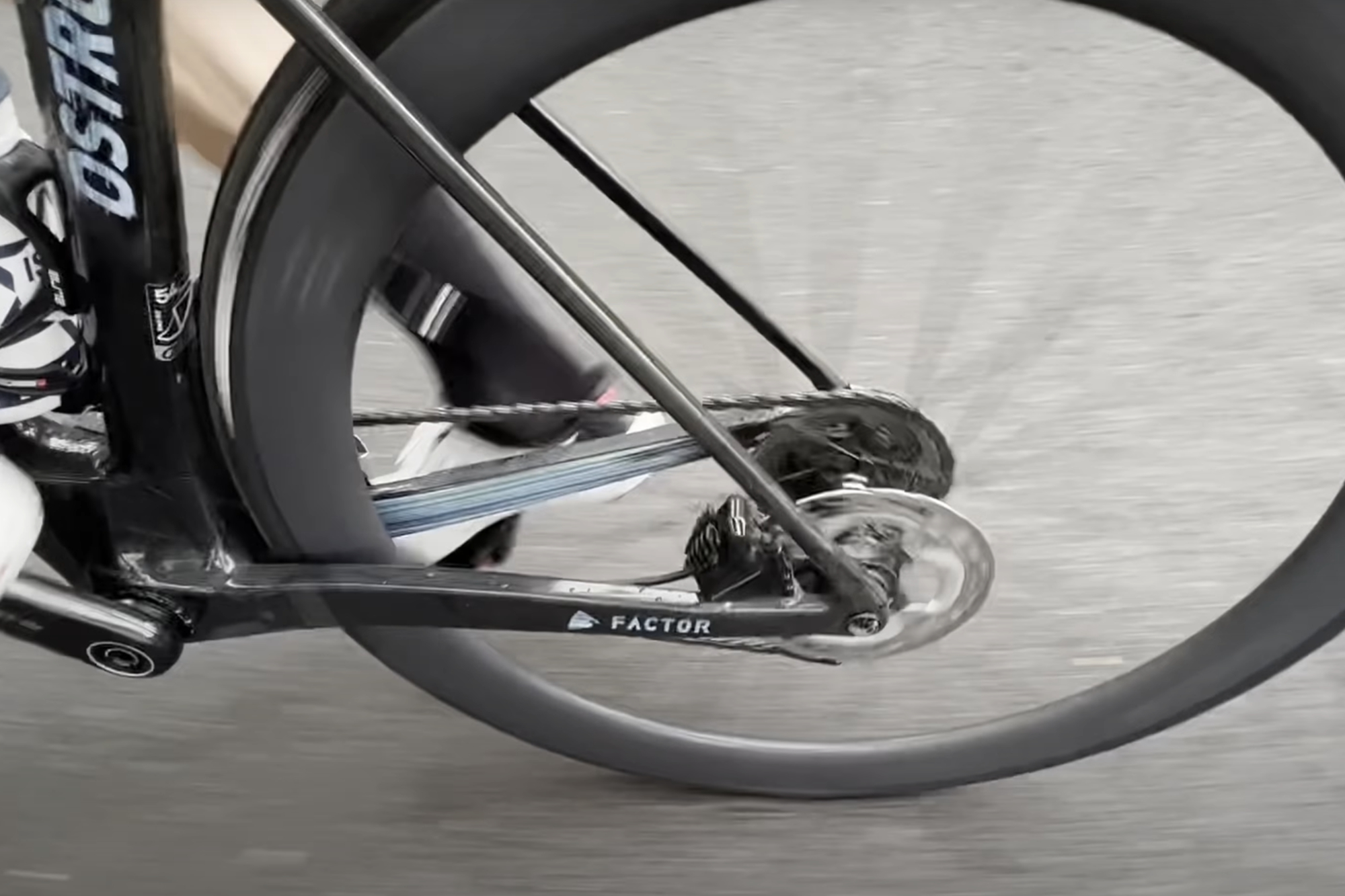Chris Froome’s latest disc brake troubles: have we got the solution?
More than a year on, Froome’s still yet to find a disc brake setup he's happy with


If you’ve ridden disc brakes in the wet, you’ll be familiar with the irritating ‘gr-tsing, gr-tsing’ sound of grit rubbing between the rotors and the pads.
The racket and its repetition is only half of what makes the noise so painful – in the back of your mind worries start to percolate of just how quickly those parts are now wearing down and how many watts it’s likely to be draining.
And it is with that noise Chris Froome’s YouTube video on riding, training and – of course – disc brakes, begins.

For those looking for fresh controversy, we’re afraid you’re going to be disappointed: Froome’s complaints, which he originally aired in February 2022, remain centred on the tiny clearances and the pistons, either not retracting fully or firing more on one side to the other.
But there are still a few details it's worth picking up on. Let's take a look.
A few observations
First and most obvious, is that Froome’s still riding the previous R9100 11-speed series of Dura-Ace and not the latest R9200 12-speed Dura-Ace.
You might remember from the launch that, along with the addition of another sprocket, Shimano made some pretty big updates to the braking system. Most relevant to Froome’s concerns is that the pad clearance from the rotors is said to have been increased by 10 per cent – which Froome says he’s quite interested about.
The latest race content, interviews, features, reviews and expert buying guides, direct to your inbox!
Less conspicuous, but still quite notable, is that Froome was using a standard Shimano set-up.
Now, there is no requirement for Froome to do this. Shimano isn’t an Israel Premier Tech sponsor and that choice has freed the team up for using Ceramic Speed jockey wheels and Rotor power cranks – although it does mean they do have to actually purchase all the Dura-Ace kit they do use.
For Froome, this arrangement means that he’s free to go with whatever caliper, rotor and pad set up he likes. Previously, he has been using Swissstop rotors and pads – but as these were what he was running at the time of his first video taking a swipe at the braking system, it’s safe to say that these weren’t a silver bullet.

During the Tour de France, Froome was spotted using a Magura brake caliper on some of the stages – presumably in the hope that German engineering might solve his issues. Given that Froome’s back on Shimano now, either that must not have worked out or something else was at play.
A potential solution?
Perhaps the new Dura-Ace will solve Froome’s problems, but there is still another route he could go down: mechanical disc brakes.
Now, although they might be more typically associated with budget bikes – and likewise their performance largely in line with the rest of the rest of the spec – they do give the scope of adjustment Chris Froome seems to be looking for.

At least with the TRP Spyre calipers, you have complete control over the pad/rotor clearance and both the pistons will always advance simultaneously. Regarding their performance, much of that is dependant on cables, pads and rotors typically used with these calipers – even a set of Meilensteins would feel heavy and sluggish if you popped a couple of touring tyres on them.
Set up with compressionless brake housing and high quality pads and rotors, the TRP Spyres do offer genuinely good performance. They still don’t give quite the same modulation and outright power as hydraulic disc brakes, but they are still much, much better than rim brakes in the wet.
Crucially, Shimano is still producing a mechanical brake option of the new R9200 Dura-Ace, nominally for rim brake bikes, so this should all be perfectly possible.
It wouldn't be the first time these calipers have been used in the WorldTour, Alberto Bettiol (pictured above) used them in the 2017 Tour de France, as back then Shimano only produced its TT levers in a mechanical version. But it could at least be the first time mechanical disc brakes are used on a WorldTour road bike – we'll have to see.

After winning the 2019 National Single-Speed Cross-Country Mountain Biking Championships and claiming the plushie unicorn (true story), Stefan swapped the flat-bars for drop-bars and has never looked back.
Since then, he’s earnt his 2ⁿᵈ cat racing licence in his first season racing as a third, completed the South Downs Double in under 20 hours and Everested in under 12.
But his favourite rides are multiday bikepacking trips, with all the huge amount of cycling tech and long days spent exploring new roads and trails - as well as histories and cultures. Most recently, he’s spent two weeks riding from Budapest into the mountains of Slovakia.
Height: 177cm
Weight: 67–69kg